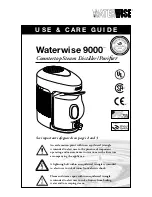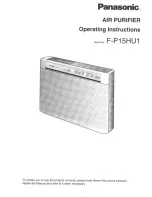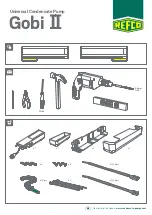
Si041254EE
Indoor Heat Exchanger
Removal Procedure
13
9. Indoor Heat Exchanger
Warning
Be sure to wait for 10 minutes or more after turning off all power supplies before
disassembling work.
In pump-down work, be sure to stop the compressor before disconnecting the
refrigerant pipe. If the refrigerant pipe is disconnected with the compressor operating
and the stop valve open, air may be sucked in and may generate an over-pressure in
refrigeration cycle, thus resulting in pipe rupture or accidental injury.
When removing or reinstalling the indoor heat exchanger, be sure to wear gloves or
wrap the indoor heat exchanger with cloths. (You may be injured by the fins.)
Caution
Be sure to conduct pump down operation before disassembling the refrigerant pipe.
If the refrigerant leaks, repair the spot of leaking, then collect all refrigerant from the
unit. After conducting vacuum drying, recharge proper amount of refrigerant.
From the viewpoint of global environmental protection, make sure to use a vacuum
pump for air purging.
Step
Procedure
Points
1
Unscrew the flare nut
for gas piping and liquid
piping and disconnect
both pipes.
Hold the indoor unit up with a
piece of wood.
Place a plastic sheet around
the drain pan to prevent
wetting the floor with
remaining drain.
If the drain hose is
embedded in the wall,
disconnect beforehand.
Carry out the removal works
with 2 wrenches.
2
Detach the indoor unit
from the installation
plate.
When the pipings are
disconnected, protect the
openings of both the pipes
and the indoor unit from
moisture intrusion.
3
Unfasten the hook and
remove the piping
fixture on the back of
the indoor unit.
Liquid piping
Gas piping
(R2796)
(R2797)
Piping
fixture
(R23429)






































